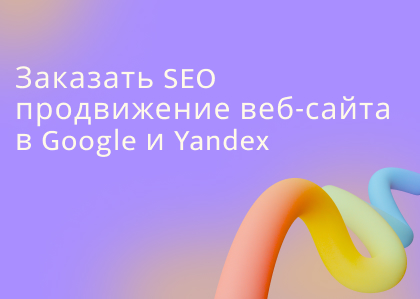Of all the available options for online business promotion in Tashkent, SEO and contextual advertising are the most common. However, clients often fail to see the difference between them because the result appears identical to them: a link to their website appears in Google or Yandex search results. However, these two promotion methods have their own differences, which influence the choice of the most suitable option for business promotion in Tashkent, the capital of Uzbekistan.
Key Features of SEO and Contextual Advertising
Search results include paid ads from advertisers (commercial block) and organic results (organic block).
The commercial block consists of paid advertisements that are marked as "Advertisement".
The organic block consists of websites that the search engine considers most relevant to the user's query.
Contextual advertising and SEO ensure placement in both blocks. Let's take a closer look.
Contextual advertising (context)
Contextual advertising is ads that users see in search results or on partner websites when entering a search query. The goal of contextual advertising is to attract visitors to the site and encourage them to make a purchase.
PS: Contextual advertising works well for quick sales. It's ideal for testing hypotheses and selling seasonal products. This is the main advantage of this tool.

Setting up an advertising campaign involves selecting keywords and creating ads. When a user enters one of the selected queries, an ad is displayed. Depending on the campaign settings, ads can appear in search results (contextual advertising) or on partner sites (YAN). The user's search history is taken into account when displaying ads on partner sites.
Payment for contextual advertising can be made per click, per 1000 impressions, or per conversion, depending on the chosen strategy.
Advertising campaigns can be paused, adjusted, or relaunched; underperforming ads can be removed and new ones added. Optimization helps reduce unnecessary spending.
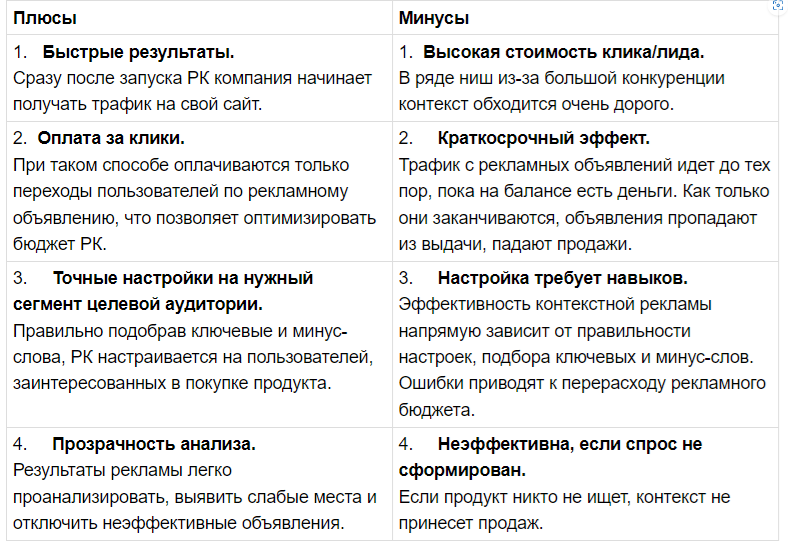
SEO website optimization
SEO (Search Engine Optimization) is a set of measures aimed at optimizing a website to meet search engine requirements. It includes work on external and internal ranking factors (organization) of websites in search results.
Off-page optimization involves placing links on a website. Links from authoritative sites are a sign of trust for search engines. On-page optimization involves working directly on the website itself: design, loading speed, interface, usability, content (text), and creating the necessary pages for promotion, etc.
PS: Getting a website to the top of search results takes time, so SEO isn't a quick sales tool. However, it allows you to target cold traffic, sell products with long decision-making cycles, and significantly reduce your contextual advertising costs in the future.
For example, someone searches for "buy a Mavic 3 quadcopter." They already know exactly what they want. In the search results, they see an ad block, and below that, organic results.
After reviewing the site descriptions in the search results, he goes to one of them and, if he likes the offer, he places an order.
Users generally don't care whether they click on an advertising or organic link to a seller's website; the link's position in search results and, possibly, the product price often play a decisive role. Therefore, contextual advertising, although expensive, shows good results when targeting high demand.
Another situation is when someone wants to buy a drone as a gift for a child but doesn't know which model to choose. In this case, they ask a different question: "Which quadcopter should I buy for a teenager?"
They also see search results with sites offering answers to their question. These will most likely be blog posts from online stores offering their products. The user clicks the link, reads one or more articles, and searches for answers. If they find useful information, they proceed to the online store's catalog, browse the products, and place an order if they find what they were looking for.
There are differences between SEO and contextual advertising in Tashkent.
The task of SEO promotion and contextual advertising in Tashkent The goal of this approach is to attract new customers to the website and convert them into targeted actions, such as submitting a request, ordering a service, or making a purchase. However, the methodology behind these two approaches differs.
Contextual advertising in Tashkent aims to attract users' attention through advertising and encourage them to visit the advertiser's website. Therefore, specialists work with campaign settings and ads, but do not modify the landing page.
SEO is aimed at changing and improving a website's ranking in Yandex and Google search results. It includes working on the website itself, improving conversion, and, to some extent, addressing off-site factors.
Here are some examples of the differences between SEO and contextual advertising specific to Tashkent:
Local keywords:
SEOTo promote your business in Tashkent, it's important to use local keywords, such as "restaurants in Tashkent" or "hotels in Tashkent." These queries will help attract local users.
Contextual advertisingContextual advertising can use location-specific keywords to ensure your ad is shown exclusively to local residents of Tashkent.
Seasonal promotions:
SEOOptimizing content for seasonal events, such as the New Year (Navruz) in Tashkent, can be an important part of an SEO strategy to attract visitors during the holidays.
Contextual advertisingWith contextual advertising, you can quickly respond to seasonal promotions and change ads and keywords in accordance with current events in Tashkent.
Competitor analysis:
SEOResearching competitors in Tashkent will help you identify their SEO strategies and find unique ways to compete in the local market.
Contextual advertisingContextual advertising allows you to analyze competitors' bids and adapt your bids and ads to compete in Tashkent.
Local reviews and ratings:
SEORatings and reviews on local platforms like Google My Business can impact your site's ranking in organic search results.
Contextual advertisingYou can use positive reviews and ratings of your services in contextual advertising to attract more attention from users.
These examples highlight the unique aspects of advertising and SEO in Tashkent, which can help you better tailor your promotion strategy to local conditions and audience expectations.
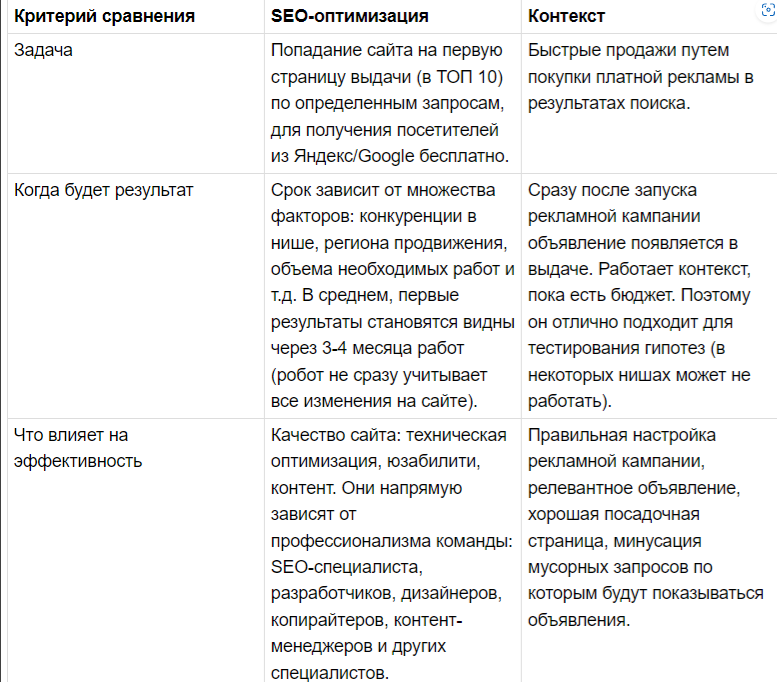
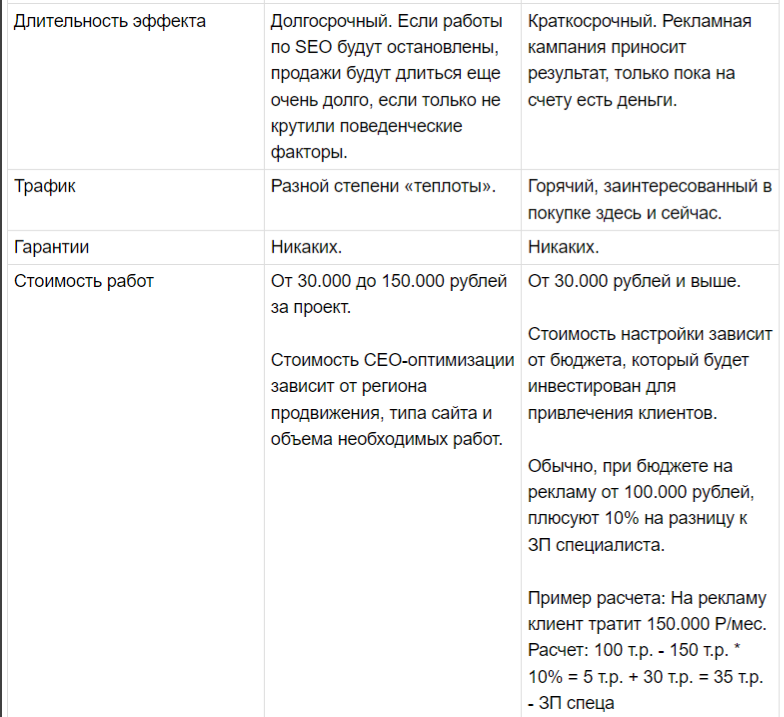
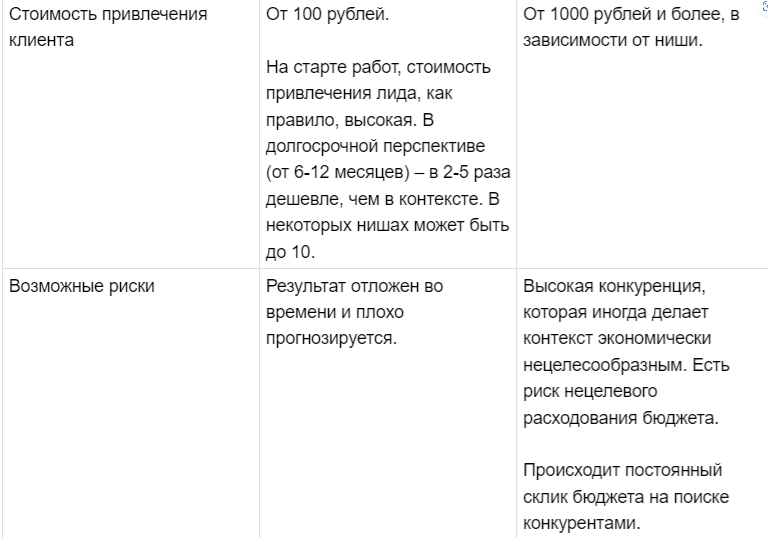
Which method to choose – SEO or contextual advertising: Which approach is better in each case?
No single promotion method offers absolute advantages; each is well suited to its own specific needs. Contextual advertising facilitates immediate sales, while SEO optimization attracts targeted traffic from search engines for free, but with a delayed effect.
The choice of method depends on the type of business, seasonality, and user demand. Let's take a closer look.
Only contextual advertising on search
Contextual search advertising is ideal for simple niches with clear products and fast transaction cycles, where a service or product is needed immediately. It's also ideal for seasonal sales, such as Christmas trees, flowers for Women's Day, gifts for September 1st, taxi bookings, towing services, and so on.
This method is also suitable:
For new websites that are not yet optimized for search engines but require instant sales.
For example, if New Year's or March 8th is coming in a month, and demand for goods increases sharply, there is no time to wait for the necessary pages to be created for promotion in Yandex/Google and for search robots to index them.
For websites with a small number of pages or single-page landing pages that are not planned for search engine optimization.
In these cases, contextual advertising can help you sell a large volume of products in a short period of time. You've found a contractor, allocated an advertising budget, launched an advertising campaign, and within 2-3 days, you're starting to receive your first orders.
PS: To maximize the effectiveness of contextual advertising, you need to understand your target audience, periodically exclude unnecessary queries (e.g., "photo," "download," etc.) to avoid wasting your advertising budget, customize your ads for different audience groups, etc.
SEO only
SEO promotion is suitable for all types of businesses: wholesalers, manufacturers, factories, service websites, media outlets, etc. In other words, SEO is suitable for virtually anyone with a website and established user demand.
Why? When someone has a question, what's the first thing they do? That's right, they go and type their query into Yandex or Google. There, they find the answers and then decide whether to order the services.
Of course, there are situations when it's better to abandon paid traffic sources in favor of SEO promotion due to high advertising costs, for example, if the cost per lead is 65-130 $ or higher.
If contextual advertising is too expensive, it's better to invest those funds in website development and get traffic from Yandex/Google search results for practically nothing. Or find alternative ways to attract customers.
What is more profitable: SEO or contextual advertising?
When choosing between SEO and contextual advertising, you need to determine your business goals. What's more important to you?
- Get orders in the first week with paid advertising?
- Increase your future sales by 2-5 times with SEO optimization and save up to 50% on paid advertising costs?
To illustrate, I'll give an example of calculating the cost of a customer in a competitive niche in Moscow. This client has access to end-to-end analytics, which displays all traffic sources, the number of orders, and the cost of attracting each channel.
Example of calculation for comparison of methods:
The company spends 4800 $ per month on contextual advertising (4300 $ is the advertising budget, 500$ is the specialist’s fee).
Thus, annual advertising costs amount to 55,000 $ rubles, and the cost of attracting one client (lead) is from 30 to 45 $.
SEO for this company's website requires an investment of 12,500 TP4T, or 15,000 TP4T per year, and the cost of customer acquisition drops to 10-171 TP4T. This translates into savings of 40,000 TP4T per year.
The figures presented allow us to draw conclusions based on specific data.
PS: It should be noted that SEO promotion is not effective for single-page landing pages and some sites created using builders such as Tilda, LPgenerator, etc. Exceptions are possible, but in most niches, these platforms are not suitable for promotion due to the limitations of their engines.
Is it possible to use SEO and contextual advertising at the same time?
Yes, this is possible and yes. Taken together, both promotional tools complement each other and allow you to increase sales by at least 2-5 times.
This can be confirmed using end-to-end analytics services that show how many orders are coming in and where they come from. If end-to-end analytics are set up and the site is well optimized, it will be clear that each channel generates approximately 501,000,000 orders in the information niche (many claim there are no orders from articles – this is not true, otherwise Ozon and other online stores wouldn't have created a blog section on their websites).
Using SEO and contextual advertising simultaneously also:
It helps with SEO. A correlation was observed in ranking/traffic growth when SEO and paid advertising were launched during the same period. This fact is confirmed by many colleagues.
Why does this happen? Advertising attracts new visitors who interact with the website: they browse service pages, view pricing information, read blog articles, and perform targeted actions (submit call requests, fill out shopping carts, etc.). In other words, they perform actions that convert the visitor into a potential customer. Search engines, using formulas, evaluate the relevance of the website to the query, consider user behavior, and collect these metrics. Search engines then use these accumulated metrics to rank websites in their search results.
Saves up to 50% on your advertising budget. After starting SEO promotion, your site will appear on the first page for certain queries over time. Therefore, you can disable some paid advertising queries or lower your bid (depending on your promotion strategy). Since the most expensive SEO work is usually done in the first few months, and then the cost can drop to a minimum (the cost per lead in some niches can be as low as 100 rubles), this can be a significant savings within your overall budget. If you use only contextual advertising, you don't have this flexibility.
Helps increase the number of website inquiries while maintaining the same number of visitors. Website SEO promotion includes efforts to increase website conversion (targeted actions).
In simple terms, SEO specialists will provide recommendations for website improvements to increase the number of inquiries, even with the same number of visitors. Implementing these recommendations will quickly increase sales severalfold.
SEO allows you to attract visitors from both Yandex and Google simultaneously. Optimizing your website for search engine crawlers allows you to rank on the first page for important queries in both search engines simultaneously. This significantly increases conversions and saves money on paid advertising.
PS: Combining methods is also beneficial from a business perspective. Contextual advertising generates quick sales but requires a large advertising budget. SEO provides cheap leads in the long term. Together, these methods compensate for each other's shortcomings.
A combination of methods will also yield good results if the company has products, situational demand, and a long transaction cycle.
For example, if someone has a toothache, they won't read articles like "How to Fix a Toothache Yourself" or "Why Does a Tooth Hurt?" They'll book an appointment at a clinic that's closer or whose offerings suit them. However, many procedures (implants, orthodontics, orthopedics, etc.) have a long sales cycle. SEO is ideal for promoting such services, as it allows you to leverage pent-up demand and cold traffic through services and articles.
Conclusion
SEO or contextual advertising: what you need to remember
SEO promotion and contextual advertising are two of the most popular methods for increasing sales, which can be used together or separately.
PS: You can read about other common customer acquisition channels in the article: Website Promotion: Which Promotion Method is Best?
Depending on your goals, these two methods can increase sales by 2-5 times and save up to 50% of your paid advertising budget when used together.


